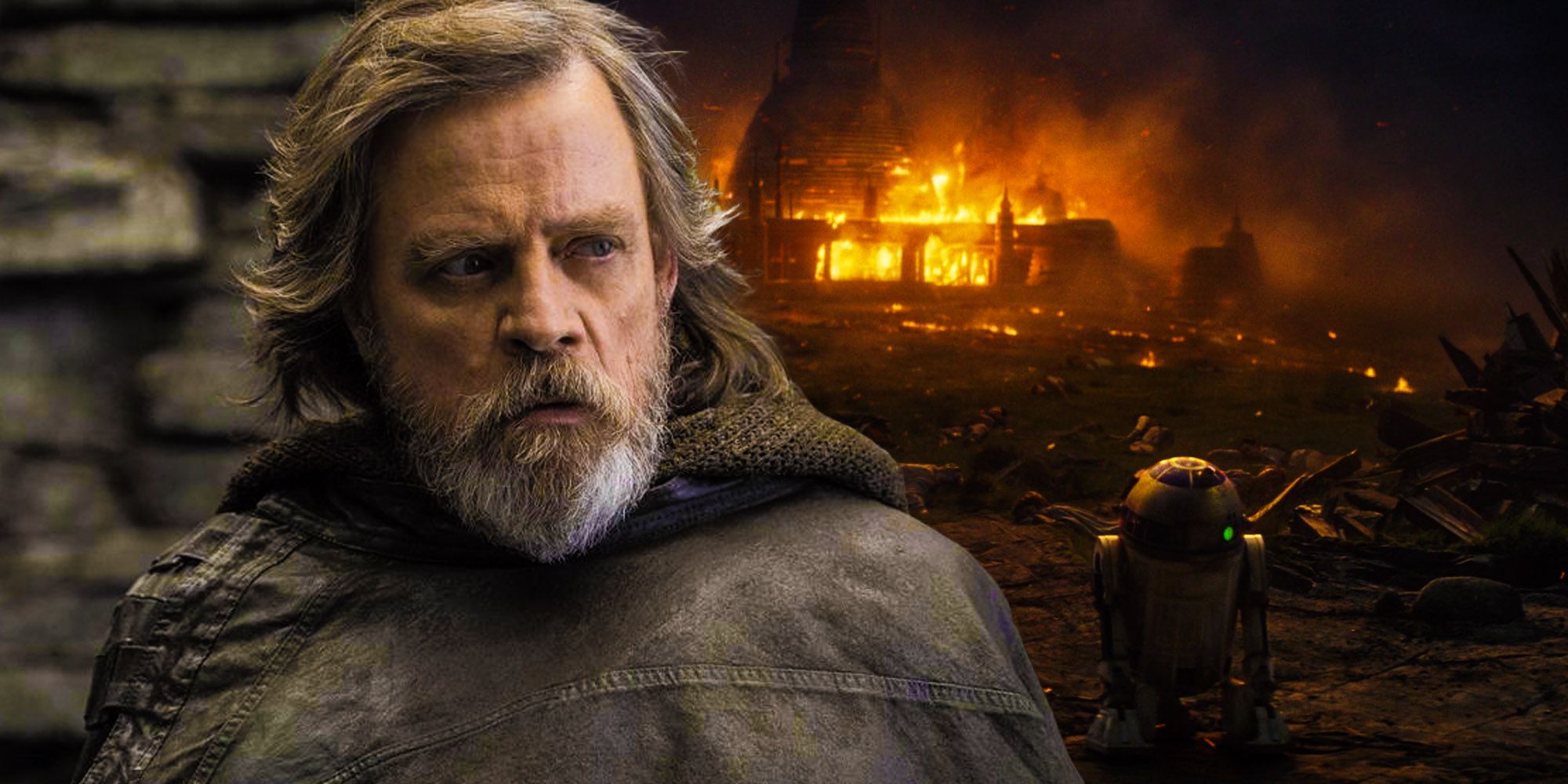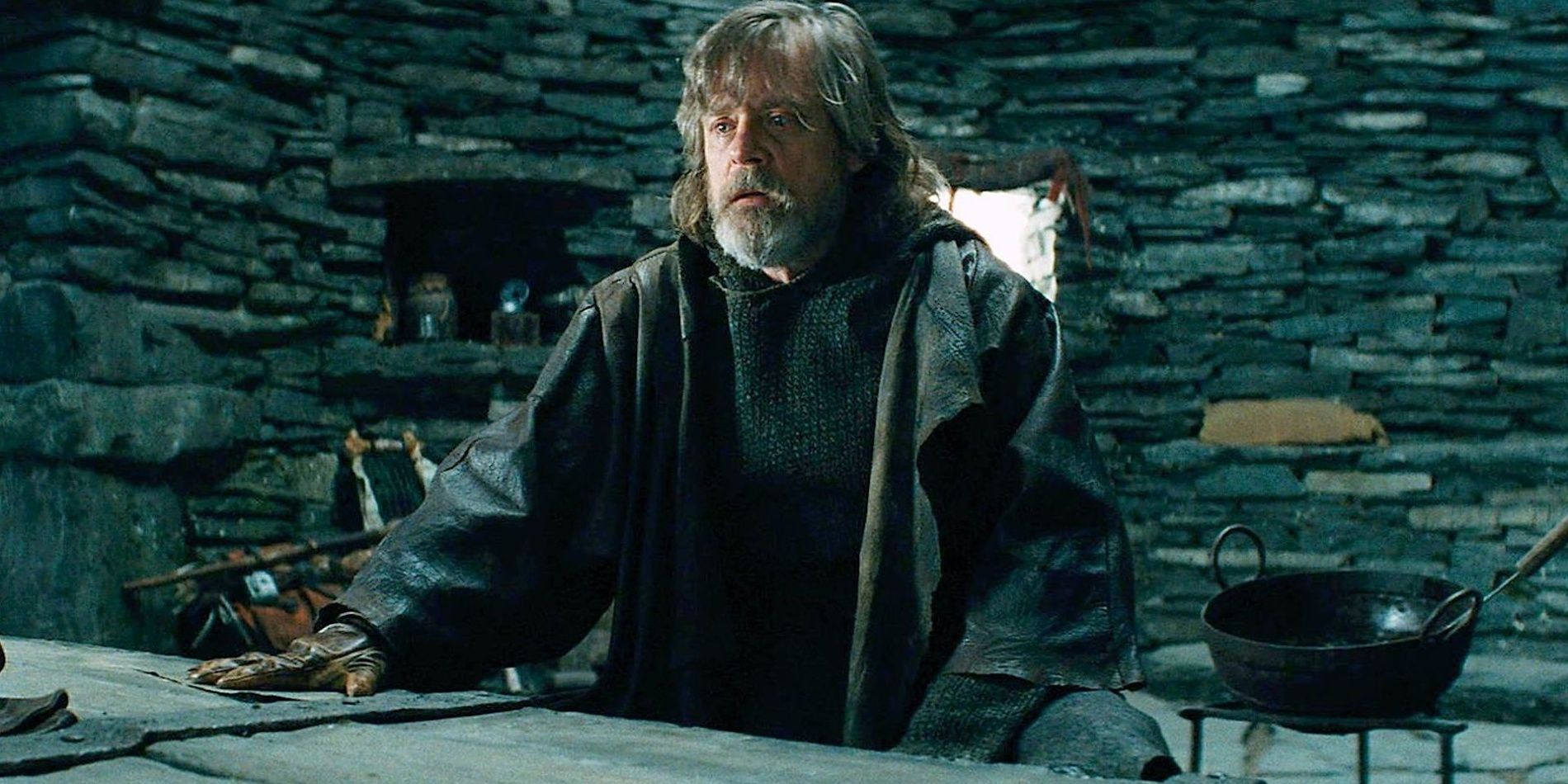After the destruction of his Jedi Temple at the hands of Kylo Ren, Luke Skywalker hid himself away on Ahch-To for many years before Rey found him at the end of Star Wars: The Force Awakens. Because of his heroics chronicled in the original Star Wars trilogy, Luke Skywalker was one of the galaxy's most mythically famous examples of the Jedi, powerful monks who studied the light side of the Force and trained in martial disciplines, most notably the use of a lightsaber. Throughout most of their millennia-long history, the Jedi remained a powerful galactic force, warring against their ancient enemies, the Sith and often working in conjunction with the Galactic Republic.
After Darth Sidious and Darth Vader brought about the destruction of the Jedi through Order 66, the Jedi were effectively (but not completely) extinct until Obi-Wan Kenobi and Yoda trained Luke Skywalker in the ways of the Force. After defeating the Galactic Empire and redeeming his father, Luke would attempt to revive the Jedi alongside his Force-sensitive sister, Leia, but the latter's son would derail that plan.
The destruction of Luke's Jedi Temple at the hands of Kylo Ren occurred in 28 ABY (After the Battle of Yavin), although the young Ben Solo had fallen under the influence of Supreme Leader Snoke and Darth Sidious long before then. While Luke's actual departure doesn't seem to have been given a precise date, he likely left shortly thereafter, driven away by the immediate intensity of the betrayal. As The Force Awakens begins in 34 ABY, Luke was on Ahch-To for around six years before Rey found him.
While six years is a relatively short amount of time in the scope of the Star Wars universe, the series has a number of precedents that give Luke's life on Ahch-To narrative significance. Most obvious are Luke's two teachers, Yoda and Obi-Wan, each of whom lived in isolation on Dagobah or Tatooine, respectively, for around 35 years following Order 66. Instances of Yoda continuing to aid remnants of the Jedi Order during this time have been recounted in stories relating to Star Wars Rebels, while Kenobi's dedication to watching over a hidden Luke Skywalker will no doubt be a central plot point in Disney+'s upcoming Obi-Wan Kenobi series. Importantly, the two Jedi Masters both went into exile out of necessity, hiding from the Empire while continuing to serve what they believed to be the will of the Force. Conversely, Luke's exile was motivated by feelings of guilt and failure which, while not explicitly fueled by the dark side, saw him effectively renounce the Jedi. This would have led to a grimmer, more purposeless exile, the results of which can be seen in his prickly demeanor and impeded connection to the Force in Star Wars: The Last Jedi.
Although Luke Skywalker's characterization in The Last Jedi was no small point of contention, his extended period of self-imposed solitude does, if nothing else, support the monastic traditions of the Jedi in a more literal way than the other films have shown, but, paradoxically, in a way that signifies the abandonment of spiritual pursuits. This could be viewed as another instance of The Last Jedi refusing to draw the franchise's conventional distinctions between good and evil. But even before that film sought to delve into the reasoning behind Luke's exile, it was Star Wars: The Force Awakens that established just how sizable the void his absence creating in the universe, reinforcing his outsized influence upon it.


